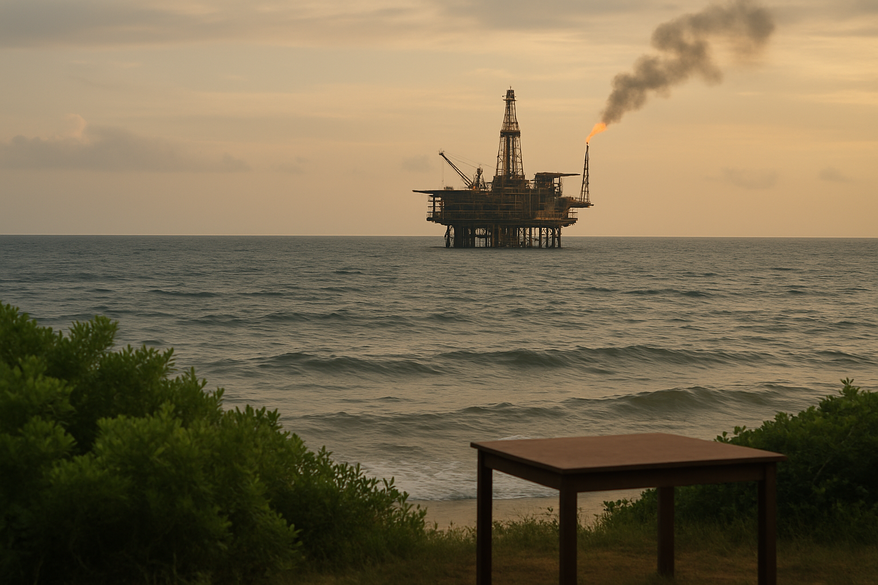Navigating the Luconia Shoals debate: industry context and corporate perspective
Teknologam Sdn Bhd monitors developments in offshore activity closely, balancing operational needs with environmental and regulatory realities. Recent reports have intensified scrutiny around projects near the Luconia Shoals. Our team recognizes public concern and the technical challenges that come with operations in sensitive marine areas, and we view this scrutiny as an opportunity to strengthen practices and communication.
Key Takeaways:
- Approval scrutiny has amplified, changing project timelines and stakeholder expectations.
- Technical and logistical demands rise when environmental watchdogs and media spotlight sites.
- We must adapt supply-chain planning and stakeholder engagement to manage reputational and regulatory risk.
Recent developments and public scrutiny
Media and civic groups have raised objections to approvals for offshore projects. For example, green groups have questioned recent approvals for oil and gas projects, reflecting local NGO unease. That sentiment has reached policymakers and the investment community.
At the same time, coverage from outlets and watchdog accounts has increased pressure on regulators to clarify legal protections for the area. Such headlines shape public perception quickly and can trigger faster, more intensive regulatory responses.
We view these developments as signals. Companies must show stronger environmental diligence and clearer communication.
Regulatory and environmental considerations
Regulators now face competing mandates: enabling energy development while protecting marine biodiversity. Watchdog organizations have increased monitoring and scrutiny of activities in and around potentially protected or sensitive marine areas. Calls for immediate reviews have followed some high-profile headlines.
Environmental impact assessments must be rigorous. Baseline ecological data and seasonal studies now carry more weight in approval decisions. Authorities may impose stricter mitigation conditions on drilling or seismic surveys, and companies should expect tighter monitoring and reporting requirements.
Recommended actions:
- Prioritize high-resolution seabed mapping.
- Expand marine-life baseline surveys and seasonal sampling.
- Implement transparent third-party monitoring and public reporting.
For companies and regulators alike, established international guidance on marine protected areas and biodiversity is a useful reference point for defining protection objectives and acceptable mitigation measures. See IUCN — Marine Protected Areas and biodiversity for context on conserving sensitive marine environments.
Technical implications for operators and suppliers
Heightened scrutiny changes operational plans. Engineering teams must factor in additional constraints on survey windows, equipment deployment, and waste management. Capital planning should include potential delays, conditional permits, and requirements for enhanced monitoring.
Our manufacturing and service lines can respond by improving modularity and portability. Equipment that reduces seabed footprint and underwater noise can lower environmental risk and improve permitability. Investing in quieter survey technologies, improved noise mitigation, and lower-emission engines helps meet stricter permit conditions and reduces ecological disturbance. For guidance on underwater noise and its effects, see NOAA — Underwater noise and its impacts.
Key Insight: Design choices that reduce environmental disturbance can shorten approval timelines and preserve licence value.
Stakeholder engagement and communication
Public sentiment escalates when headlines dominate coverage. Regional news and specialist outlets have made Luconia Shoals a focal point for discussion, intensifying debate and scrutiny. This underscores the need for transparent, proactive engagement.
Operators should publish clear mitigation plans and monitoring commitments. Engaging local communities and conservation groups early can reduce opposition. Independent audits, third-party monitoring, and publicly accessible data portals build trust and demonstrate accountability.
Concern over marine park violations is a recurring theme in NGO statements. Addressing that concern decisively matters for consent and continuity.
Business continuity and internal reflections
Operational certainty requires contingency planning. Scenario models should include permit reversals, additional monitoring, and shifted timelines. Procurement teams must secure flexible contracts and alternative suppliers to maintain project momentum under changing conditions.
Internally, we reflect on how our products support compliance. We can accelerate R&D on low-impact solutions and partner with regulators for pilot projects. This aligns commercial objectives with environmental stewardship and helps de-risk projects for sponsors and lenders.
Recommendations for project sponsors
- Strengthen environmental baseline studies before submission.
- Deploy lower-noise technologies and minimized seabed-contact equipment.
- Establish transparent monitoring, third-party verification, and community engagement protocols.
Conclusion
The Luconia Shoals discussion highlights changing expectations for oil and gas projects. Integrating robust environmental practices and clear stakeholder communication reduces regulatory and reputational risk and supports more sustainable operations. Teknologam remains committed to delivering technologies that help operators meet rising regulatory and social standards while maintaining operational efficiency.
